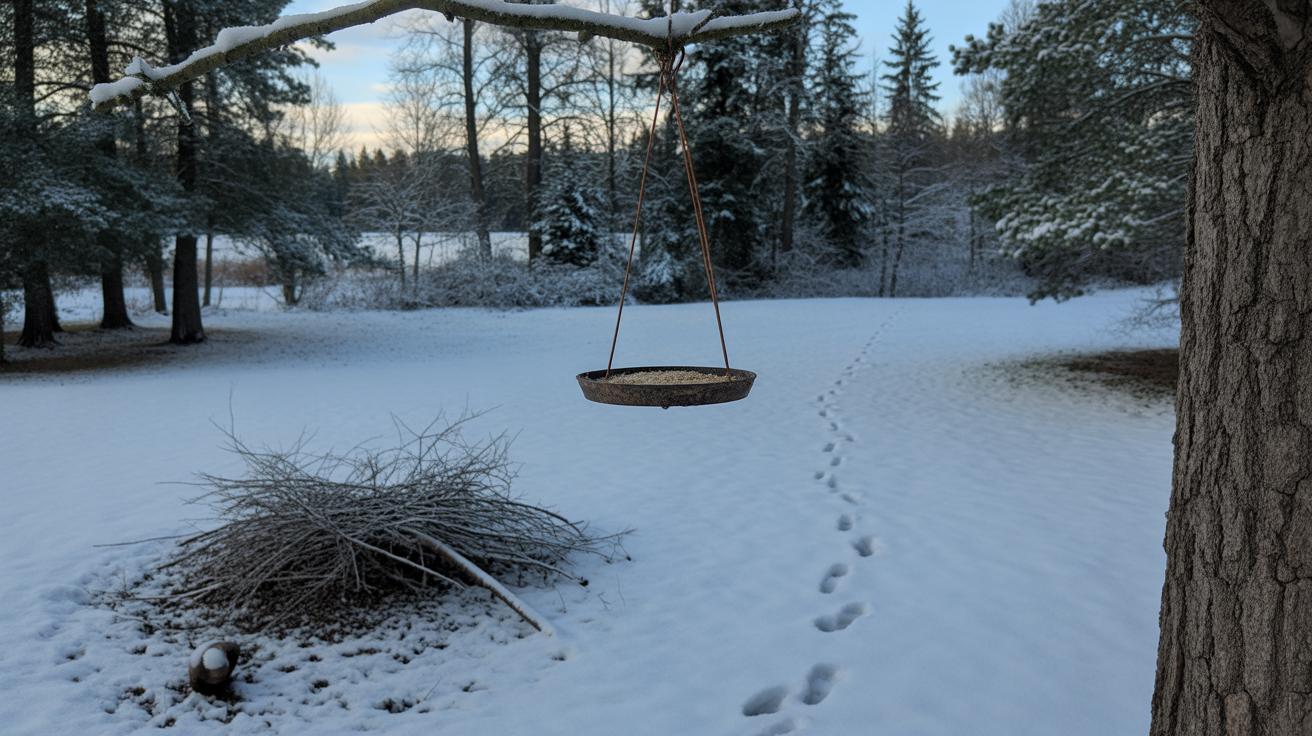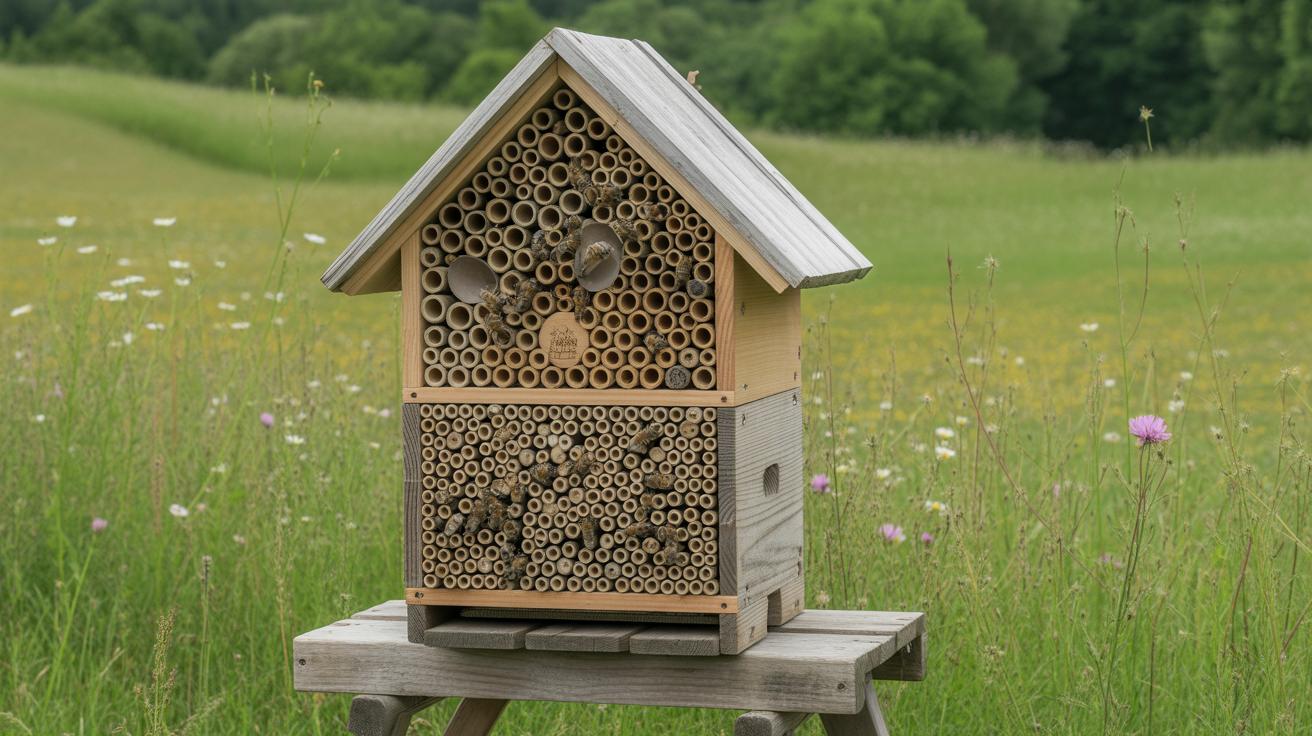Introduction
Winter brings a special set of challenges for animals. Many creatures change their behavior or migrate to survive the cold. But some stay active and can be attracted to your outdoor space with the right preparations. Discover how to attract winter animals to your outdoor habitat and create a welcoming environment.
You’ll learn how to prepare your habitat for cold weather visitors, understand their needs during winter, and find out practical tips to support their survival. Whether you want to watch birds, squirrels, or other wildlife, this guide will help you bring winter nature closer.
The Basics of Winter Animal Behavior
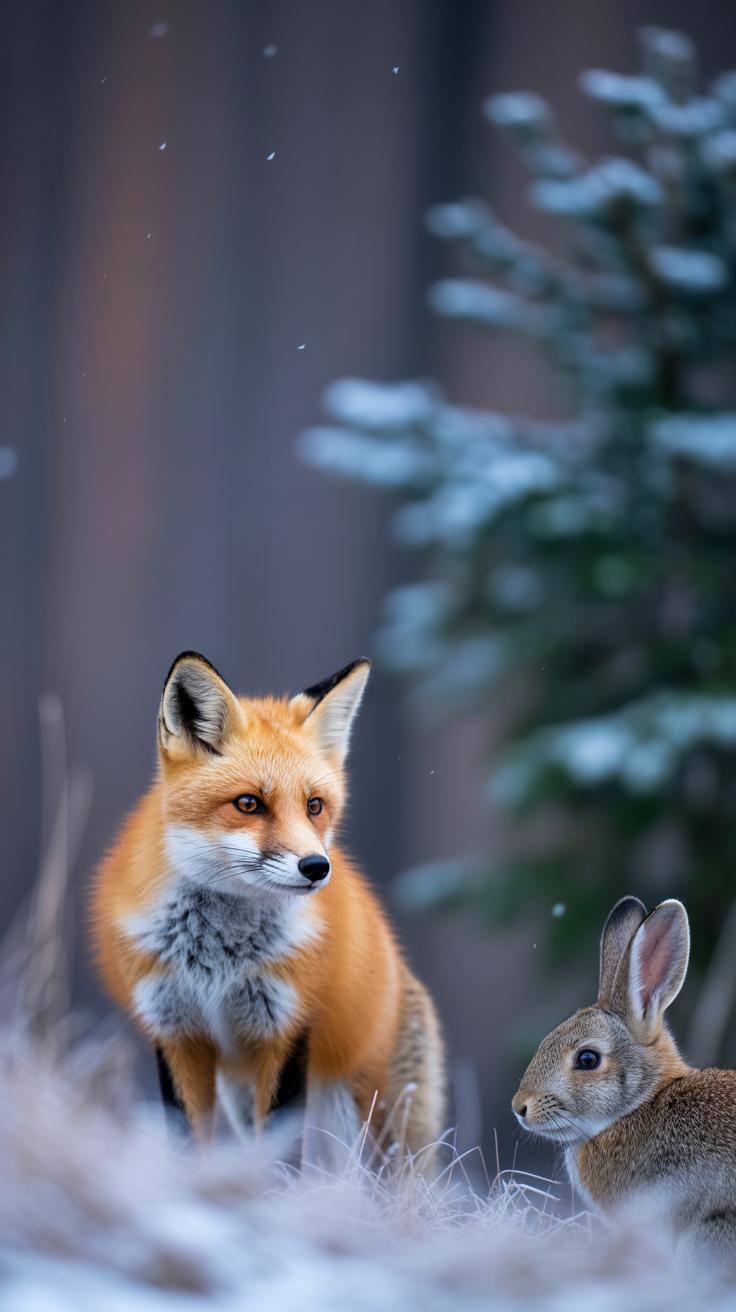
Winter changes everything for animals. The cold and shorter days push many species to adjust their habits just to survive. Some slow down, some stay busy, and others disappear almost completely from sight.
Animals tend to shift their energy use during winter. They often move less to conserve heat and calories. Food becomes scarce, so animals get picky or shift their diets. You might notice birds flocking more, or animals digging through snow for hidden treats. It’s easy to forget that survival isn’t just about toughing it out—it’s about smart decisions.
Nature’s strategies vary, but you can spot patterns:
- Minimizing activity to save energy.
- Changing feeding habits to what’s available.
- Seeking shelter or grouping together for warmth.
Does this mean animals stop being active? Not necessarily. It often depends on the species and environment, which leads us to look closer at their unique adaptations.
How Animals Adapt to Cold and Food Scarcity
Some animals use hibernation to ride out winter. Bears and some bats, for example, lower their body temperature and slow their metabolism almost to a halt. It’s like switching to a low-power mode. You might wonder how they wake up—well, it’s not always a smooth process.
Others, like squirrels and some birds, store food during warmer months. They hide nuts or seeds and rely on these stockpiles when fresh food disappears. This strategy depends a lot on memory and luck, since other animals might find the stash too.
Besides hibernating and hoarding, many develop physical changes:
- Thicker fur or down feathers for insulation.
- Color changes to blend in with snow.
- Reduced body extremities to minimize heat loss.
These adaptations ensure their bodies use resources in a way that keeps them alive without burning out.
Which Animals Stay Active in Winter
While hibernators catch a break, many animals keep moving through winter. Deer, rabbits, and foxes are good examples. They don’t hibernate but change tactics instead.
Deer grow thicker coats and shift to eating tougher plants. Rabbits dig through snow to find bark and twigs. Foxes hunt small rodents that stay active below the snow layer. Their success often comes down to steady movement and constant foraging.
Birds like chickadees and woodpeckers don’t migrate far either. They fluff feathers to trap heat and flock together to share warmth. Watching them at your feeder can be a reminder just how resilient some creatures are, even when conditions are harsh.
So, when you plan your outdoor habitat, think about these ongoing activities in winter wildlife. Your efforts to attract and support animals might serve as a lifeline during these tough months.
Choosing the Right Location for Your Habitat
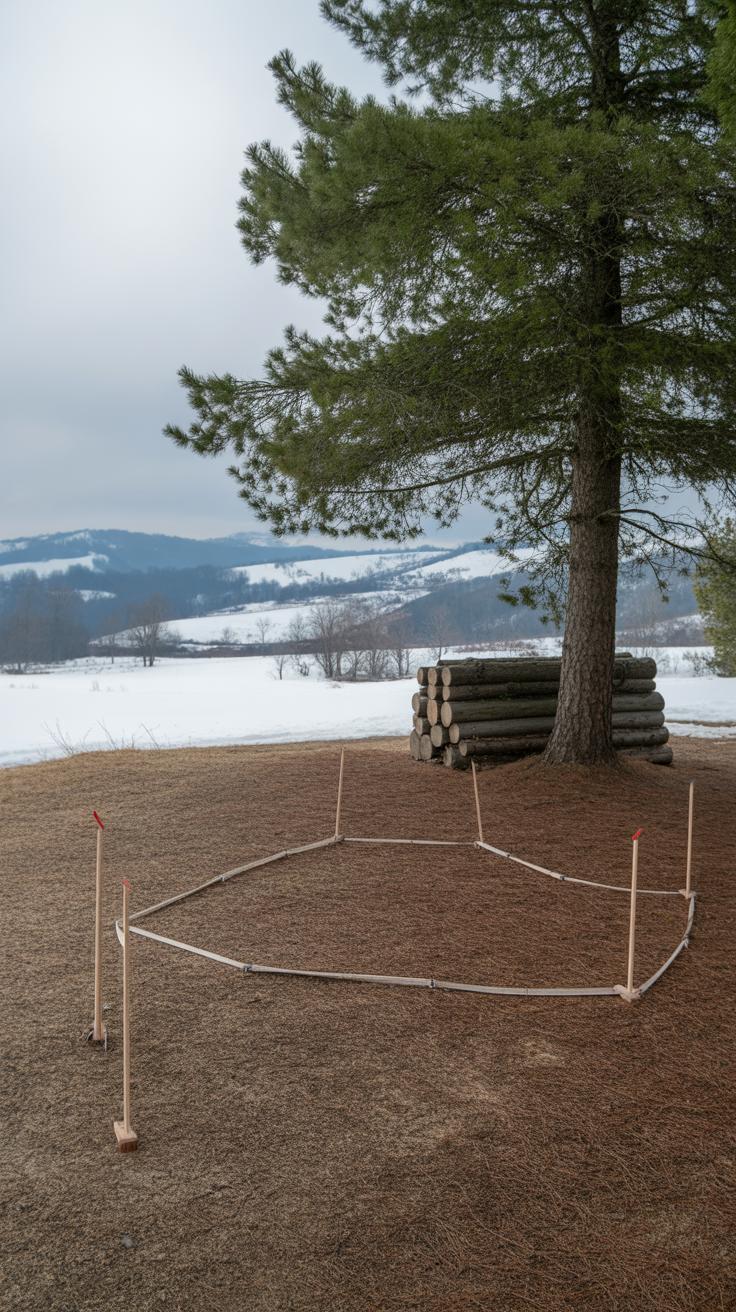
Identifying Natural Shelters and Food Sources
Finding the best spot in your yard for a winter habitat starts by looking closely at what nature has already set up. Trees with dense branches, brush piles, or even fallen logs often provide the shelter animals need from cold winds and predators. I’ve noticed that conifers, with their needle cover, offer better protection than deciduous trees that lose leaves in winter. It might seem obvious, but places near water sources, like a small pond or stream—even a birdbath—can attract wildlife because water is scarce during freezing months.
Also, watch where natural food sources cluster. Areas with berry bushes, oak trees dropping acorns, or patches where seeds fall give animals a reason to stay. You might find that wild animals frequent certain spots already without much disturbance.
Avoiding Disturbances and Dangers
Once you pick a location, think about how often you or pets will pass nearby. Winter animals are particularly sensitive to noise and sudden movements. Even friendly dogs running through the yard can scare off shy critters for days. It’s best to place habitats where foot traffic is minimal and away from bright outdoor lights, which can disrupt animal patterns.
Also, be mindful of potential dangers like nearby roads or areas where chemicals like fertilizers or salts are used. Sometimes the perfect shelter spot can be too close to human hazards without you realizing it. I found a beautiful brush pile near my driveway, but it was too exposed to traffic noise and car fumes. Moving the habitat a bit deeper into my yard made a noticeable difference; more animals started visiting regularly.
Providing Food That Supports Winter Survival
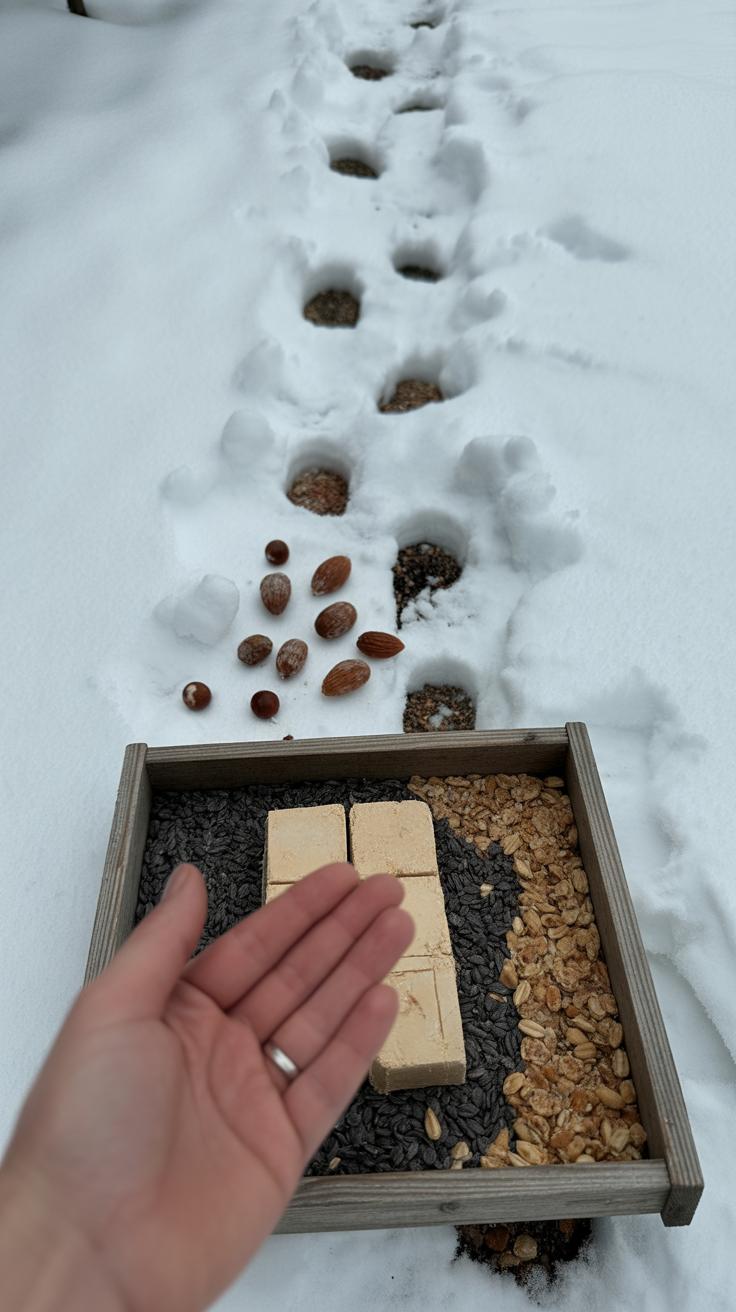
Types of Feeders and What to Offer
Feeding winter animals means thinking carefully about what and how you provide food. Different animals prefer different feeders, so matching the style to the species helps them find and eat the offerings. For birds, tube feeders with mixed seeds or sunflower seeds work well—you’ll see chickadees, finches, and nuthatches flocking to them. Platform feeders suit squirrels and cardinals since they hold a wider variety of food and offer space for bigger animals.
Peanut butter, unsalted nuts, and sunflower seeds are favorites for squirrels, but avoid anything sugary or salty. For other critters, like deer or rabbits, you might scatter oats, apples, or carrots nearby, but keep it clean to avoid attracting unwanted visitors. Have you noticed how some animals prefer certain seed types? It’s kind of fascinating and makes feeding feel less random and more like an experiment.
Feeding Schedules and Quantity Tips
When to feed is tricky—you want to help without creating dependence. It’s usually best to feed once or twice a day, in the morning and late afternoon. That’s when animals are most active and looking for energy to last the cold night. Feeding too often or overloading feeders leaves leftovers that spoil or attract pests.
Moderation is key. A handful of seeds or nuts can sustain local animals without overwhelming them. If you offer too much, some may stop seeking natural food, which isn’t good for their long-term survival. I found that by watching your feeders daily, you get a sense of what amount works—sometimes less is more. Do you think animals can tell when we’re trying too hard? Maybe.
Creating Shelter That Protects from Winter Weather
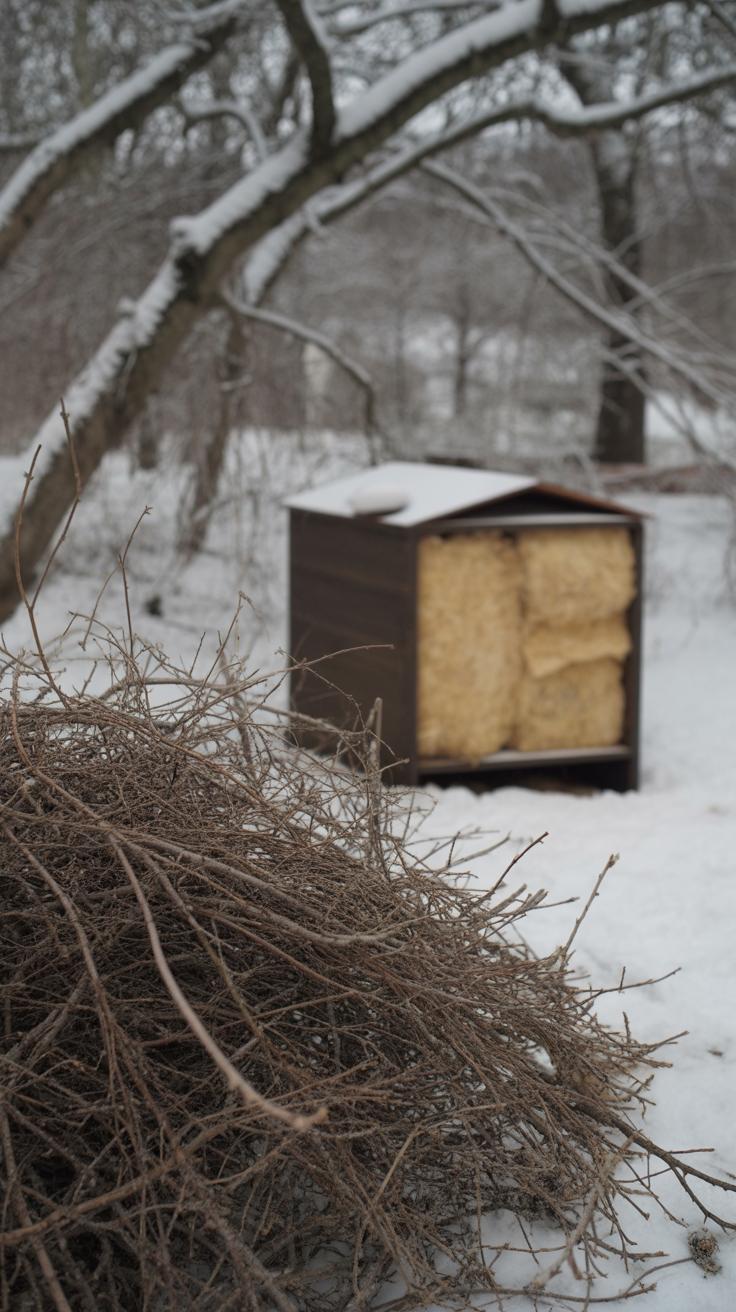
Building or improving shelters for winter animals means thinking about protection from cold, wind, and snow. A simple shelter needs to block drafts and offer dry, insulated space. You might use natural materials like leaves and pine needles to line the inside, which helps keep warmth without trapping moisture. Some animals, like small mammals, rely on burrows or dens for that cozy cover. If you add entrances that face away from prevailing winds, you improve shelter effectiveness.
When deciding on shelters, it helps to match certain designs with the animals you’d like to attract. For birds, birdhouses with small openings keep larger predators out. Brush piles offer refuge for rabbits, chipmunks, and even some snakes by mimicking fallen wood and dense undergrowth. Larger animals, such as foxes or raccoons, prefer dens—sometimes they reuse hollow logs or safe spots under porches. Each type needs slightly different features.
Regular check-ups matter. Shelters might get waterlogged or cluttered with old nests that can spread parasites. Clearing debris and fixing broken parts keeps shelters safe. Keeping predators in mind is tricky. For instance, placing shelters away from open areas can reduce visits from coyotes or neighborhood cats. You might think once a shelter is set up, you’re done—but ongoing care makes all the difference in winter survival.
Providing Water and Staying Safe for Winter Animals
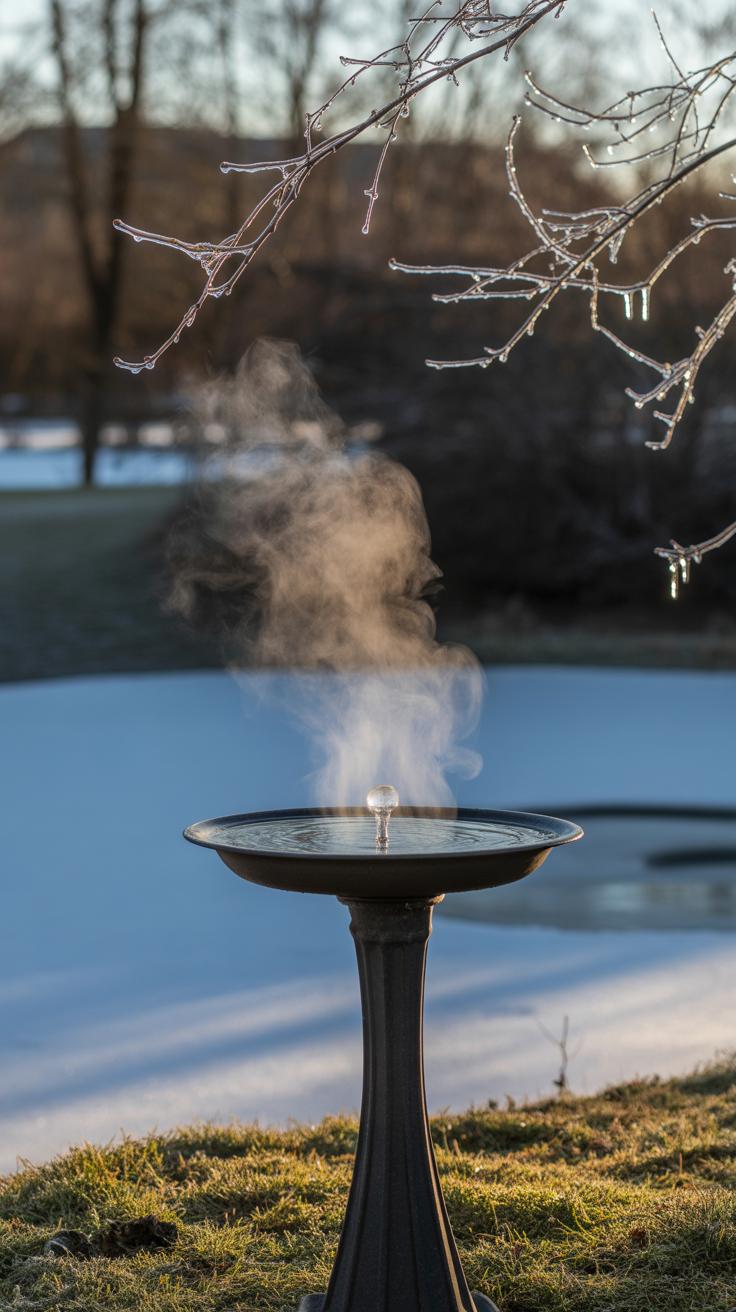
Keeping Water Sources Accessible
Water can become scarce in winter. Snow might cover ponds, streams can freeze over, and animals still need to drink. You can help by making sure water stays available and accessible. One way is to place shallow dishes or bowls in spots that get some sunlight. Sunlight can slow freezing a bit, so try near south-facing areas if you can. If temperatures are very low, try using heated water bowls made for outdoor use—they’re not perfect, but they help. Another trick is to break the ice on natural water sources regularly, but don’t disturb the animals too much when doing so.
Sometimes, water containers need refilling more often since cold weather speeds evaporation when water is exposed, oddly enough. And if you notice animals avoiding your water source, maybe it’s freezing too much or the location feels unsafe to them. It can be a bit of trial and error to find out what works for your specific setting.
Avoiding Hazards in Your Habitat
Winter habitats can look peaceful but hide dangers your visitors may face. Ice patches are one of the biggest trouble spots. Animals slipping or getting stuck in frozen puddles is more common than you might think. Try to reduce ice formation by scattering sand or gravel in frequently trafficked paths.
Toxic plants also pose risks, even in winter, when animals might be hungrier and nibbling unfamiliar things. Keep an eye out for plants like yew or certain holly varieties. Removing or fencing off these areas can save animals from poisoning.
Lastly, avoid traps, snares, or any yard equipment that could cause injuries. Winter makes animals slower and less vigilant, which increases their vulnerability. I once found a forgotten wire trap in a snow-covered brush, and it made me rethink how much I inspect the area regularly.
By offering reliable water and mindful safety measures, you help create a winter habitat that welcomes wildlife without unintended risks. It may not be perfect from the start, but small adjustments make a difference.
Recognizing Winter Animal Signs and Tracking Visitors
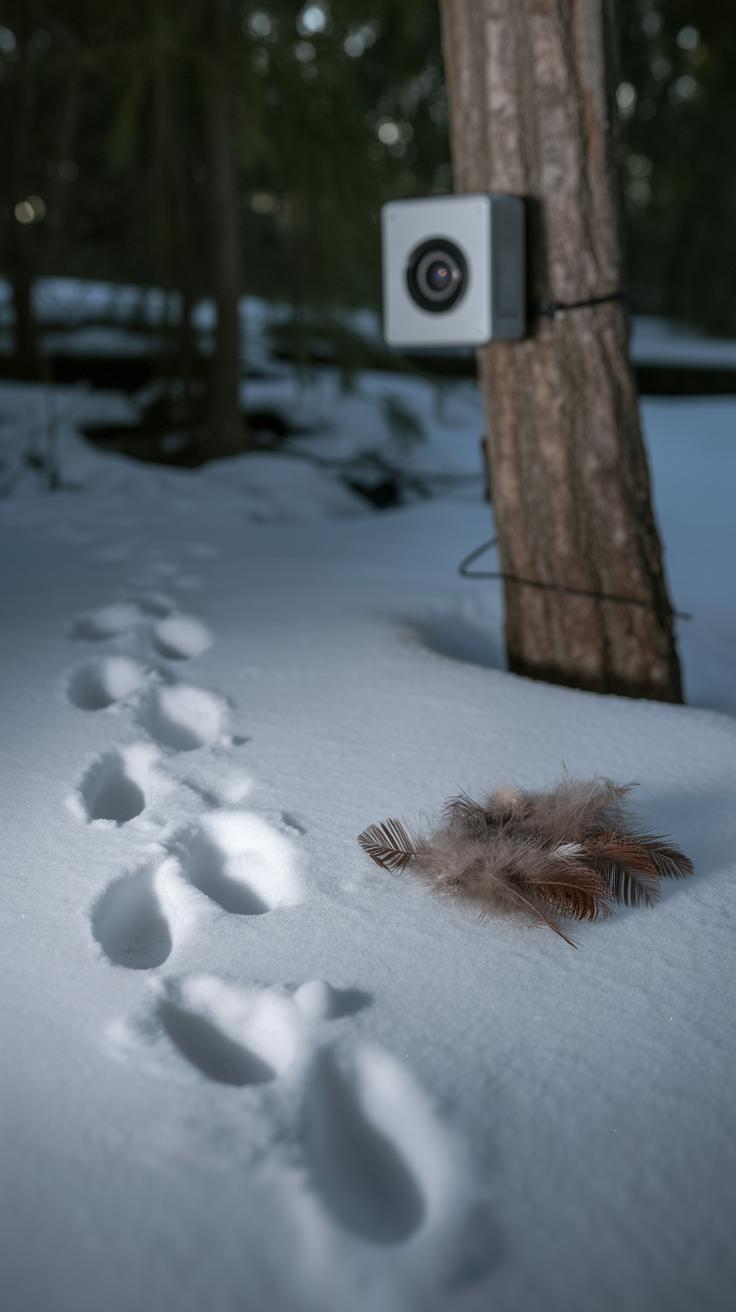
When you’re trying to get to know the wildlife in your winter habitat, the animals themselves aren’t always around to say hello. But they leave clues–subtle, sometimes easy to miss. Learning to recognize these signs can give you a real glimpse into their presence and habits.
Common Tracks, Sounds, and Droppings
Tracks in the snow are the most obvious hints. Deer leave those distinctive cloven hoof prints, usually quite large and spaced out. Rabbits hop around, leaving paired prints that often look like a sideways T. Foxes and coyotes walk more steadily, sometimes dragging their claws. If you’re lucky, you might spot small rodent runs or bird footprints near feeders.
Sounds can be surprisingly revealing too. The rustle of a squirrel’s movement in trees or a woodpecker tapping can indicate life nearby without any visual contact. And don’t forget droppings. They tell stories about what the animal has been eating, sometimes even their health or stress level. Next time you find scat, observe its size, shape, and color—it might help identify the visitor.
Using Cameras and Logs for Observation
Setting up trail cameras is something I wish I’d done sooner. You don’t need fancy equipment—just a basic motion-triggered camera can capture who visits and when. They work well at night, too, catching those creatures that prefer darkness. Place them near water sources or feeding spots, and watch your log fill with unexpected activity.
Keeping a simple logbook adds a personal touch. Record dates, weather, tracks, sounds, and camera sightings. Over the weeks, patterns emerge. Maybe you notice a certain animal arrives only after a snowfall, or visits more at dawn. This kind of patience and note-keeping deepens your relationship with the habitat. It’s a quiet, slow way to understand the winter visitors without disturbing them.
Adjusting Your Habitat Through the Winter Months
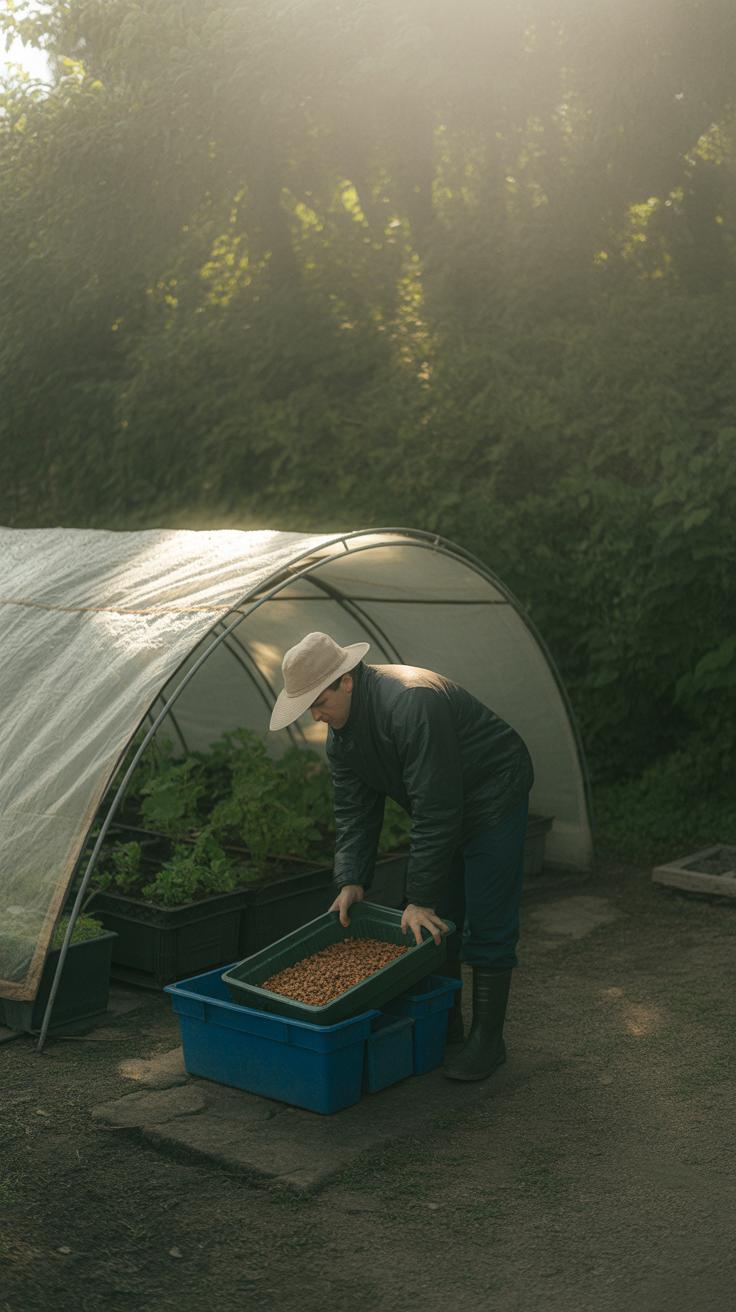
Increasing or Decreasing Food and Care
Winter is not static. Days get colder, sometimes milder, and wildlife behavior shifts with the chill. Your role as a habitat caretaker means tuning in closely to these changes.
When deep cold strikes, animals need more energy. This is when boosting your feeding efforts pays off. For example, offering high-fat seeds or suet can help birds maintain their body heat. But if temperatures rise unexpectedly, or snow melts away, animals often find natural food more easily. That’s when you might scale back a bit and avoid overfeeding, which can discourage foraging instincts.
It can be tricky to judge. If you notice fewer visitors at your feeders or less activity in your habitat, it might signal that animals are finding enough elsewhere. But if tracks and signs persist, or if you see birds returning frequently, keep the food coming. Balancing feeding is part art, part observation, and you’ll probably adjust habits differently each winter.
Preparing for Early Spring Changes
As winter fades, your habitat will gradually feel different. Days grow longer, temperatures creep up, and animals shift behavior toward reproduction and renewal.
This transition period requires adjusting your care. Start cutting back on heavy feeding to encourage natural foraging once plants begin sprouting again. Opening up shelter spots by clearing old debris can help animals moving through their spring routines, like nesting birds or emerging small mammals.
Don’t be surprised if some species seem less dependent on your support suddenly. That’s good—it means your habitat is working. But other visitors may just be arriving off late migrations or coming out of hibernation, needing specific kinds of cover or water. Watch these subtle changes and keep evolving your habitat care as animals prepare for spring’s demands.
The Joy and Responsibility of Supporting Winter Wildlife
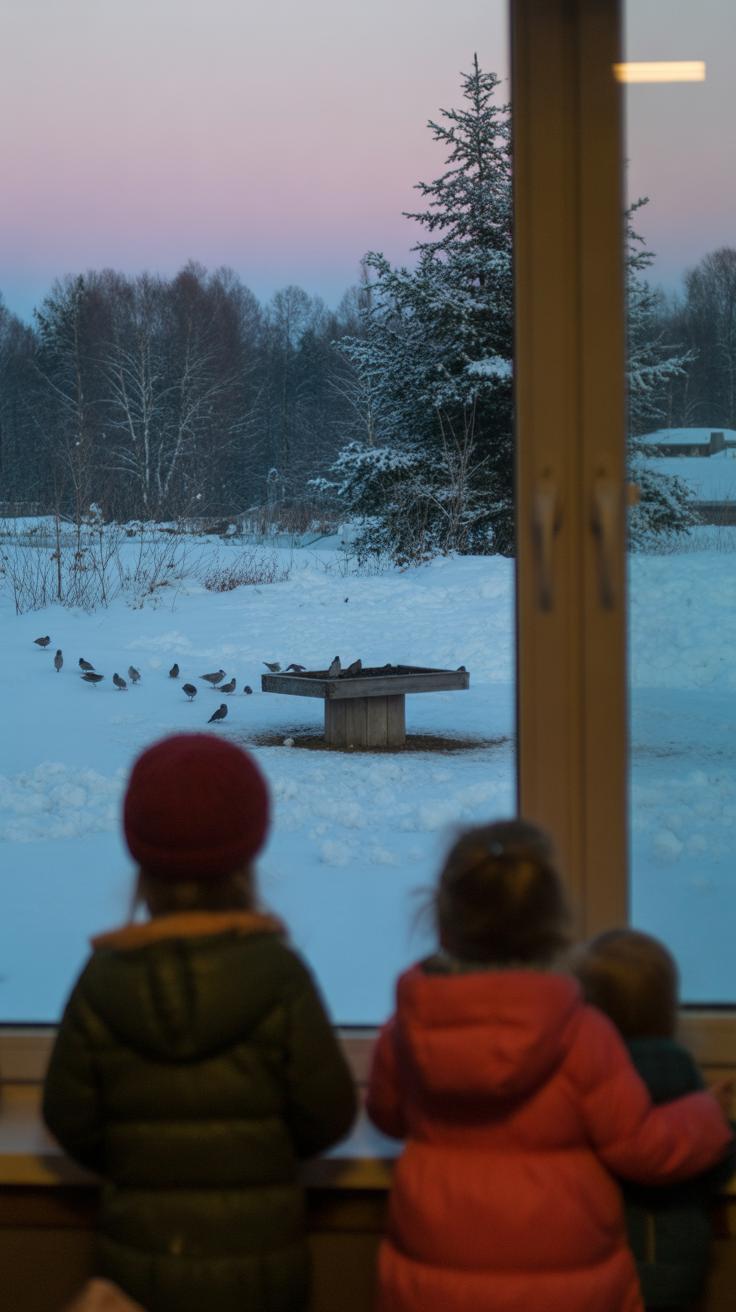
How You Benefit from Observing Winter Wildlife
Watching animals navigate the harshness of winter can be quietly uplifting. There’s something oddly reassuring in seeing birds flock to your feeders or rabbits quietly searching under the snow. It invites a sense of calm, almost like a break from the rush of everyday life. For me, those simple moments often turn into little reminders of nature’s persistence—something that can help ground you. You might find that your mood lifts just by spotting a squirrel’s clever workaround or a deer’s cautious approach.
Spending time outdoors observing wildlife can also sharpen your awareness. You start to notice tiny tracks in the snow or the subtle signs animals leave behind. This can deepen your understanding of the balance in your own backyard, making you feel more connected to your environment. It’s not just about entertainment; it’s about forming a small but real bond with living creatures trying to cope with winter, which can enrich your experience of the season.
Ethical Considerations in Wildlife Support
Supporting winter animals means walking a careful line. You want to help without disrupting their natural habits. It’s tempting to put out endless food or change the landscape in ways that aren’t natural, but that could do more harm than good. For example, overly relying on feeders might make animals less able to fend for themselves, or inviting too many to one spot can spread disease.
So, how do you help responsibly? Think about providing natural food sources and safe shelter without going overboard. Let the animals keep their normal routines as much as possible. Avoid making the habitat too dependent on you — they’ve survived winters before, after all. It takes patience, and sometimes reevaluating what you’re offering. Still, it feels worth it if you consider what your presence means in their fragile winter world.
Conclusions
Supporting winter animals in your outdoor habitat creates a rewarding connection with nature during the cold months. By offering food, water, and shelter, you help wildlife meet their survival needs. Think about what animals are native to your area and provide resources they rely on for winter.
Enjoy watching how animals respond to your efforts and learn from their behaviors. Your habitat can become a safe haven where winter animals thrive, adding life and joy to your outdoor space all season long.


